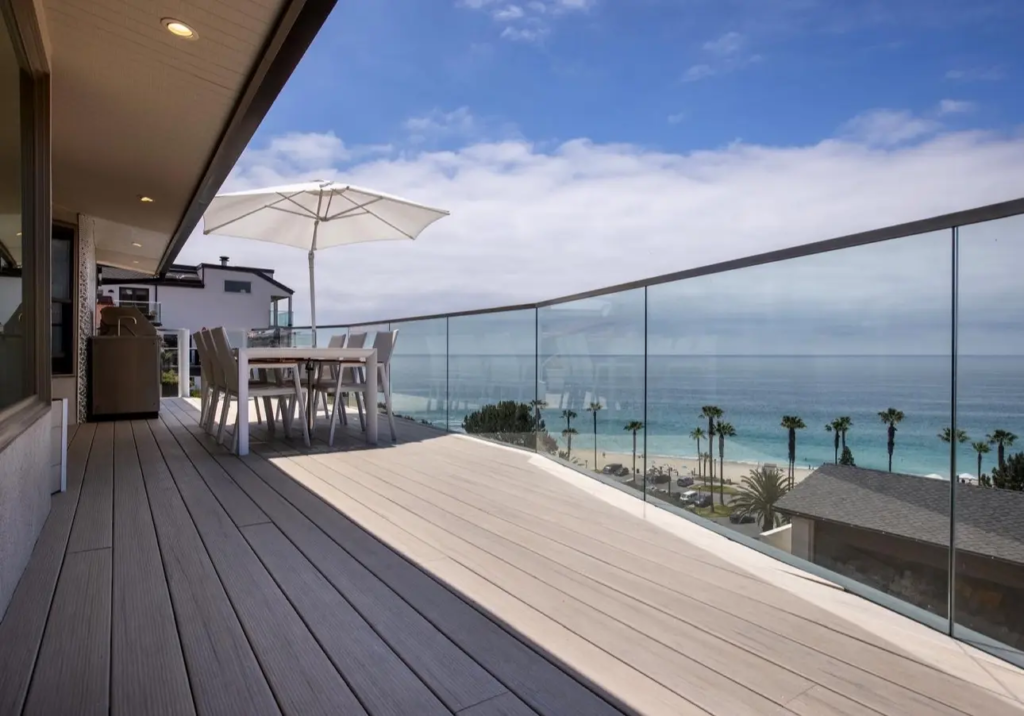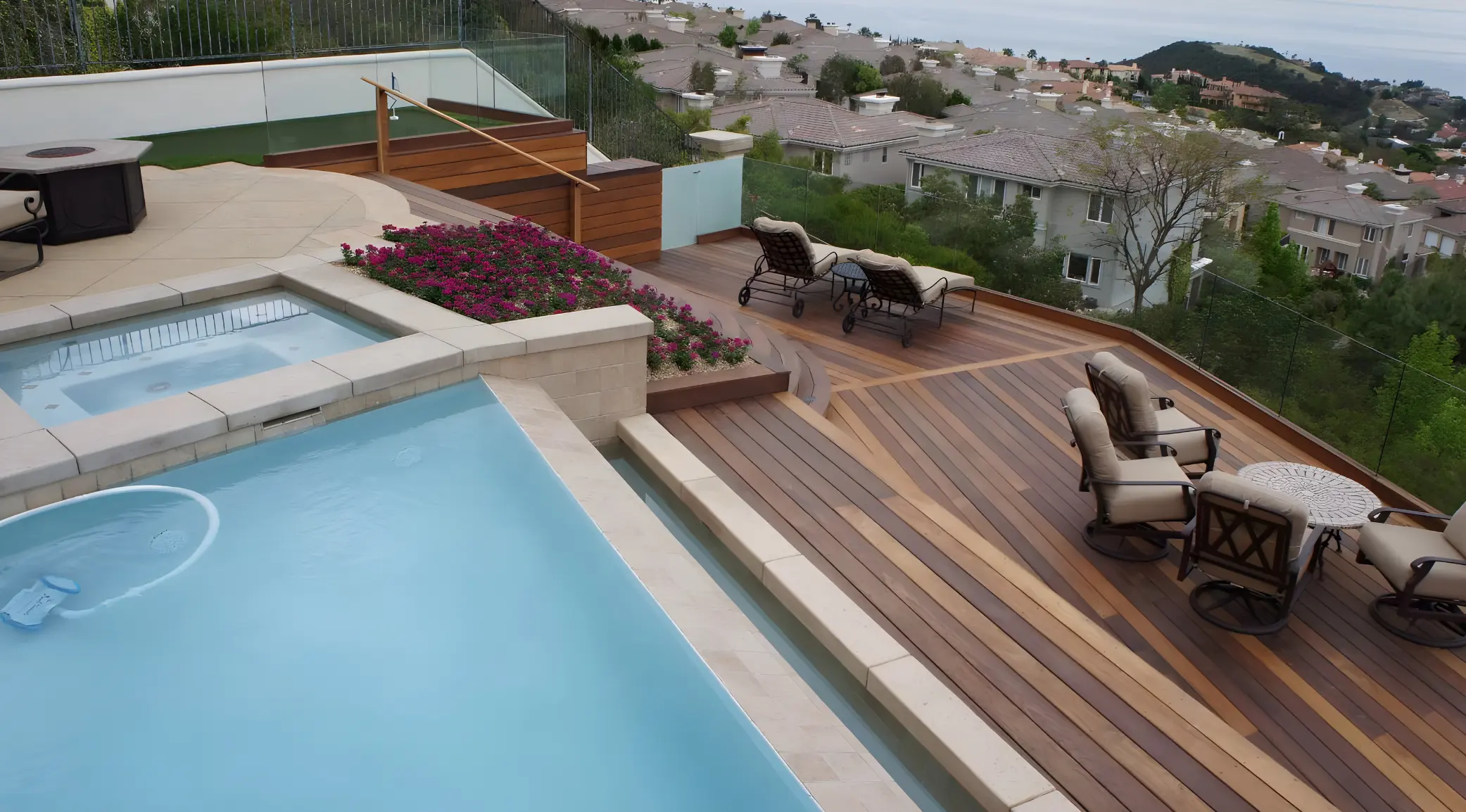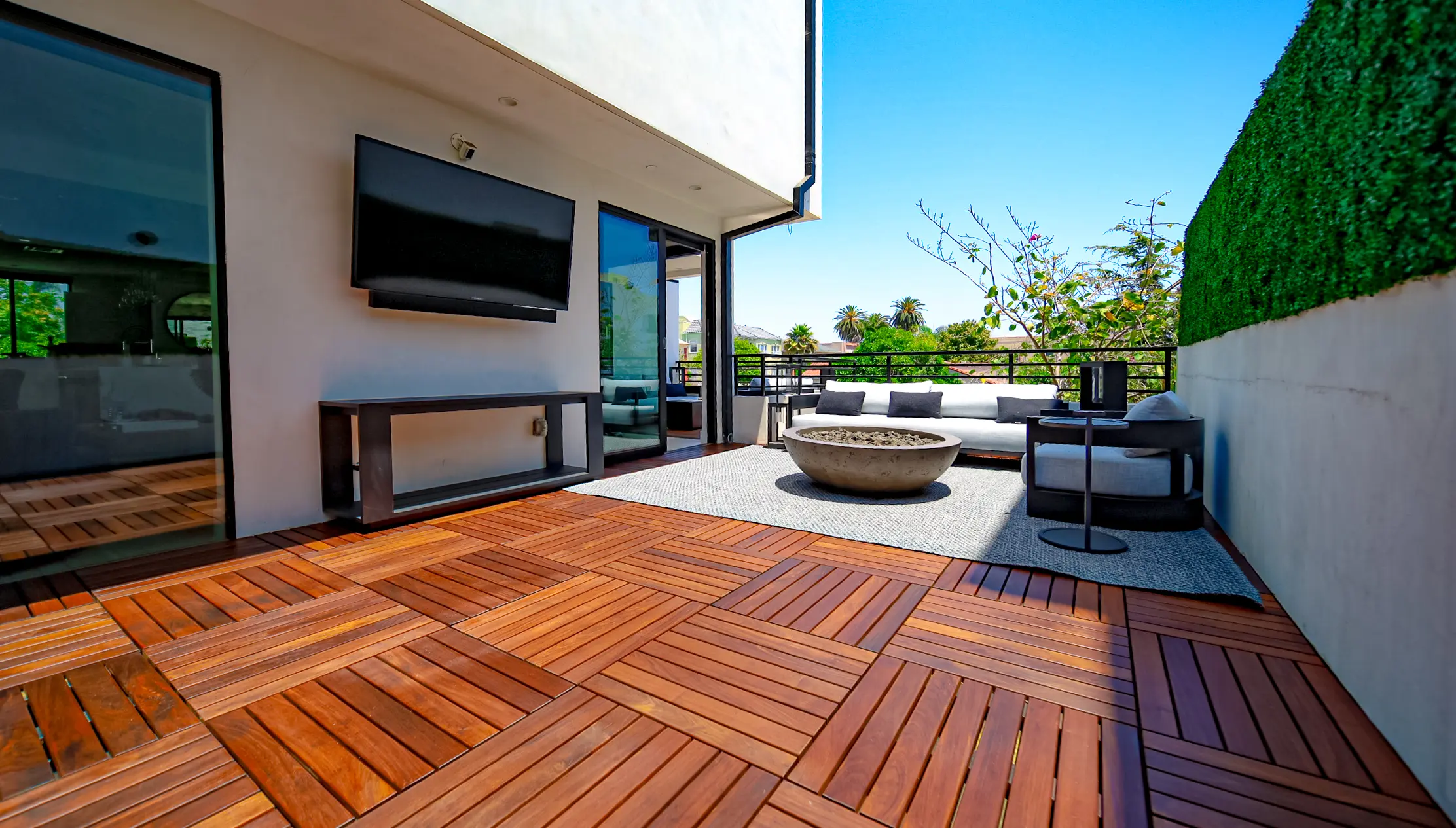-
shop
Tropical Hardwoods
Thermally Modified
Composite
PVCs
Deck Tiles
Tropical Hardwoods
Thermally Modified
PVCs
Tropical Hardwoods
Thermally Modified
PVCs
Tools & Accessories
-
GALLERY
-
RESOURCES
Tropical Hardwoods
Thermally Modified
Composite
PVCs
Deck Tiles
Tropical Hardwoods
Thermally Modified
PVCs
Tropical Hardwoods
Thermally Modified
PVCs
Tools & Accessories
Southern California summers are no joke. Intense UV rays, dry heat, salt air, and a whole lot of backyard foot traffic put outdoor materials to the test. If you’re building or upgrading a deck in SoCal, choosing the right decking materials for summer isn’t just about design, it’s about how that deck will hold up on a 95-degree afternoon when someone steps onto it barefoot with wet feet and a cold drink.
At Beyond Lumber, we supply premium decking materials built to perform in summer conditions. Here’s what to consider when picking a material that won’t crack, warp, or turn into a frying pan.

When it comes to Southern California decking, the key challenge is heat, sun, and dryness — conditions that test every material. UV exposure breaks down wood fibers, bleaches color, and dries out boards. Add chlorine, saltwater, or even desert dust into the mix and you’re asking a lot from your deck.
That’s why the materials we recommend for summer use all have one thing in common: they can take the heat.
Thermally modified woods, like heat-treated ash, are ideal for high-sun environments. These boards are modified using only heat and steam, so there are no chemicals or toxins involved. The result? A material that barely absorbs moisture, resists rot naturally, and doesn’t warp in the sun.
Because it’s modified to be dimensionally stable, it stays flat and smooth even when temps spike in the San Fernando Valley or Temecula. Plus, it takes oil and stains evenly if you want to preserve its original color.
Some woods just don’t care how hot it gets. Ipe and Cumaru are two of them. These Brazilian hardwoods are naturally dense, tough as nails, and built for brutal conditions. They don’t splinter easily, they’re slip-resistant even when wet, and they laugh in the face of termites and sun exposure.
If you’re working on a deck in Malibu, Laguna, or even the high desert, these materials are as close to indestructible as wood gets. Ipe wood is darker and more uniform, while Cumaru deck boards offers a bit more color variation. Both look incredible with modern stucco homes and clean outdoor lines.
One note: they’ll gray over time unless you oil them. Some clients love the weathered silver look. Others want that deep, rich brown. Either way, it’s your call.

Garapa isn’t as dense as Ipe, but it has one big summer advantage: it stays cooler to the touch. Its golden color reflects more sunlight than darker woods, which means you won’t burn your feet walking across it at noon.
This makes it a solid option for poolside builds or homes in places like Westlake Village, Glendale, or Torrance where summer temperatures spike but the budget might not stretch to Ipe. It still holds up well to moisture, insects, and daily wear, and gives you that natural hardwood look with a bit less upkeep. And for those who are interested in a more budget-friendly alternative to Ipe and Cumaru, Garapa comes with the lower price tag as well.
Some clients want a deck that just works: no oiling, no sanding, no seasonal maintenance. That’s where composite and PVC decking shine. Brands like TimberTech, Trex, and Deckorators make engineered boards designed specifically to resist fading, warping, and mildew.
Modern composite and PVC boards are far better than the ones you might remember from 15 years ago. They stay cooler, they look more like real wood, and they won’t stain from sunscreen or barbecue grease. Deckorators, in particular, has a mineral-based board that holds up well in full-sun exposure and doesn’t absorb heat like traditional composites.
If you’re building in coastal areas like Manhattan Beach or inland zones like Riverside, composites are a smart call for low-maintenance living.

The best decks in Southern California are built with materials that were made for heat, sun, and everyday summer use. At Beyond Lumber, we specialize in supplying long-lasting, high-performance wood and composite decking that’s ready for SoCal weather.
We carry Ipe, Ipe desk tiles, Cumaru, Garapa, thermally modified options, and the top composite brands in the industry. Our team works closely with contractors, architects, and homeowners to make sure every summer deck is built to last.
Visit our Beyond Lumber yard in Los Angeles to explore premium hardwoods and composite decking designed for SoCal heat and style.
We offer expert guidance, fast nationwide shipping, and wholesale pricing for contractors, designers, and homeowners alike.
From Ipe and Cumaru to thermally modified wood and composites, we’re your trusted source for Southern California decking that’s built to last – making every summer space cooler, stronger, and more beautiful.
people also liked





